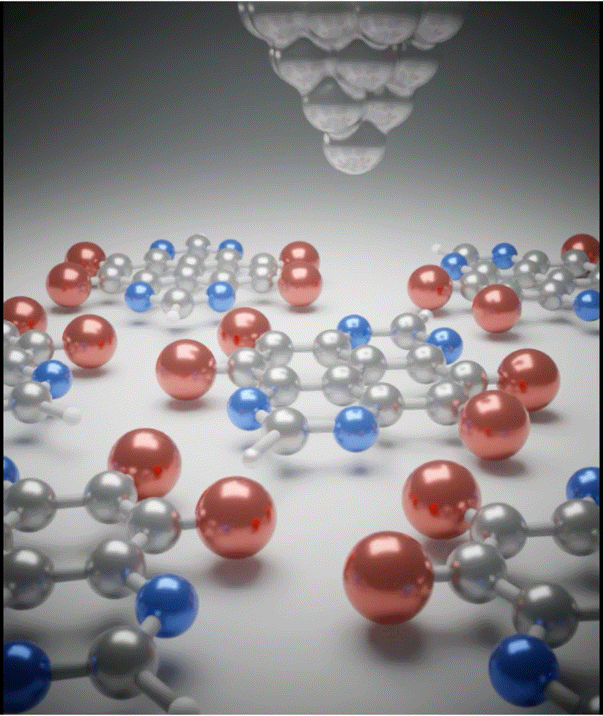/ News, Research
Vibrations of molecules visualized and studied

TBTAP molecules on a silver surface initially are negatively charged. If a positive voltage is then applied to the tip of an STM and brought close to the molecule, the molecule discharges.This discharge does not occur in one go, but rather in an oscillating manner. (Animation: Department of Physics, University of Basel)
Researchers from the SNI network have developed a new method for imaging the vibration of molecules. The scientists, led by Professor Ernst Meyer from the Department of Physics at the University of Basel, have studied a specific pyrene molecule on a silver surface using a scanning tunneling microscope (STM). Understanding molecular vibration is of crucial importance in a wide range of areas in molecular electronics, spintronics or in the development of quantum computers, since vibrations affect transport properties and spin dynamics. The work was recently published in the scientific journal Nature Communications.
In the study, the researchers placed a so-called TBTAP molecule on a silver surface. Upon contact with the surface, the molecule initially becomes negatively charged. If a positive voltage is then applied to the tip of an STM and brought close to the molecule, the molecule discharges.
The physicists were able to observe that the discharge did not occur in one go, but rather in an oscillating manner. Thiscan also be seen on the STM images on the basis of so-called Coulomb rings. Theoretical calculations showed good agreement with the experimental data.
Various applications conceivable
The possibility to observe molecule vibrations on surfaces is of great importance, for example, for investigating energy loss (dissipation) during current transport, since energy loss is also caused by vibrations. After refinement of the method, identification of the molecules is also conceivable – similar to spectroscopic methods – since the vibrations are specific to certain molecules.
The investigations are based on a collaboration of researchers from the universities of Basel, Freiburg, Bern and Salzburg.
Original publication
Research group Prof. Ernst Meyer, Force Microscopy Lab
